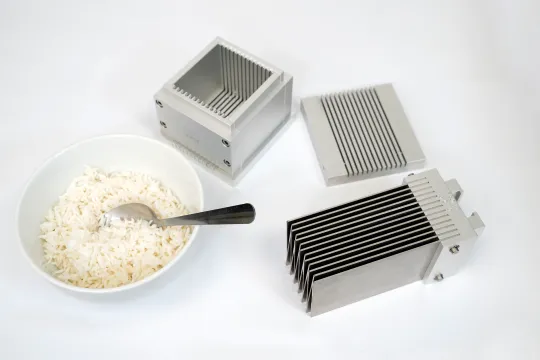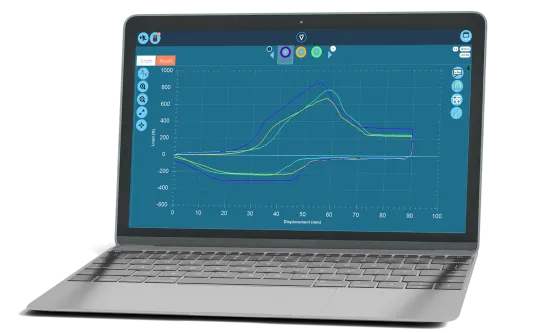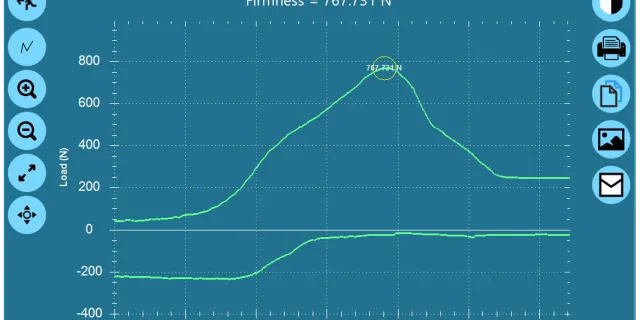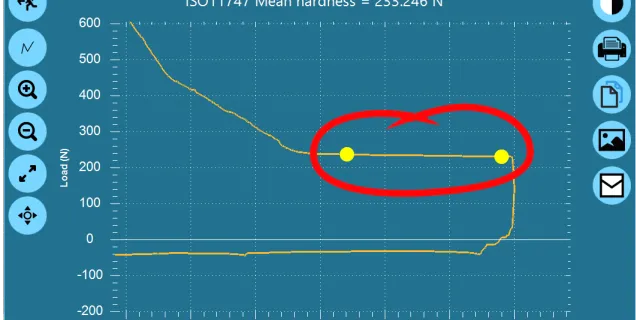Cooked rice firmness stickiness and adhesiveness
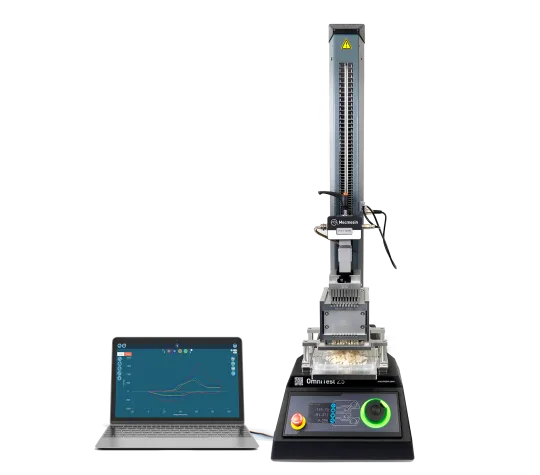

Solution
- Software-controlled texture analyzer
- Compression-shear bite-and-chew fixture
Benefits
- Intuitive software to apply custom procedures or international food standards
- Versatile equipment can be used for multiple texture tests on different foods
- Extensive reporting to log results for audit purposes
Requirement
The texture of rice is vital to how the consumer perceives the quality of the product. Texture is one of the sensory criteria critical to acceptance. Along with vision, taste and smell, the physical (touch) sensation is an essential attribute (mouthfeel, the most important) that food scientists must consider—and control. The qualities that rice exhibits at the plate are influenced by variations in harvesting (which affects the protein and carbohydrate levels) and the cooking preparation itself. Additionally the rice grain variety will respond differently to these conditions and processes.
Rice producers need to be able to provide cooking guidelines for their product in order to achieve desired levels of firmness and stickiness. The food must be fully cooked but overcooking will produce other mechanical properties that should be limited or avoided.
The levels of acceptance/quality may be determined by individuals or panels of sensory experts.
ISO 5492 (BS 5098) clearly defines these levels, to un-ambiguously assign terminology to food texture. For example, soft, firm and hard are common ways to describe degrees of hardness—one of five primary chracteristics. Another is adhesiveness, where the distinct levels are sticky, tacky and gooey/gluey. Once these levels are determined, the consumer will decide which attribute represent excellent, acceptable or unacceptable for a specific food type.
Solution
The Mecmesin Rice Texture Analyzer is a bench-top, software-controlled system to evaluate the physical sensory quality properties of rice and other foods. It is fitted with a Kramer compression-shear fixture, that replicates the natural bite and retraction actual of the human mouth and teeth. By exerting forces on the food sample to physically deform it in a manner replicating human interaction—eating, checking or preparation—and measuring the characteristic response, producers can correlate these results with "ideal" examples of the product.
To define the texture of rice in a meaningful and complete manner, a complete compression and retraction cycle is required. This can enable the calculation of firmness (the rice industry term quantifying hardness) and stickiness (an adhesiveness attribute). The test is performed on a "bulk" sample, simulating a mouthful of product, as individual grains are not relvant to this procedure.
The VectorPro software controls the movement of the blades into the rice sample and out again, measuring the force-displacement characteristics and using salient qualities of the curve to calculate the texture attributes. Assigning pass/fail levels enables the food scientist to grade the product against that cook profile. VectorPro can also perform the standard TPA (Texture Profile Analysis) procedure, in which two cycles are performed. This enables calculations relating to how the foodstuff responds under a second "chew" action, highlighting more attributes relating to breakdown and recovery. This test can provide a detailed texture baseline but is not always completely relevant for all texture analysis purposes.
The typical rice testing strategy involves cooking batches of rice (at least three), prepared (or sourced) in different ways. By calculating the mean values of the essential texture parameters for each set of batches, a confident comparative result is achieved. In this way, the rice producer can confidently recommend cooking instructions for their rice varieties; white, basmati, wholegrain, jasmine, etc.
Test equipment
- Software-controlled texture analyzer
- Compression-shear bite-and-chew fixture, Kramer CS-2
- VectorPro software


